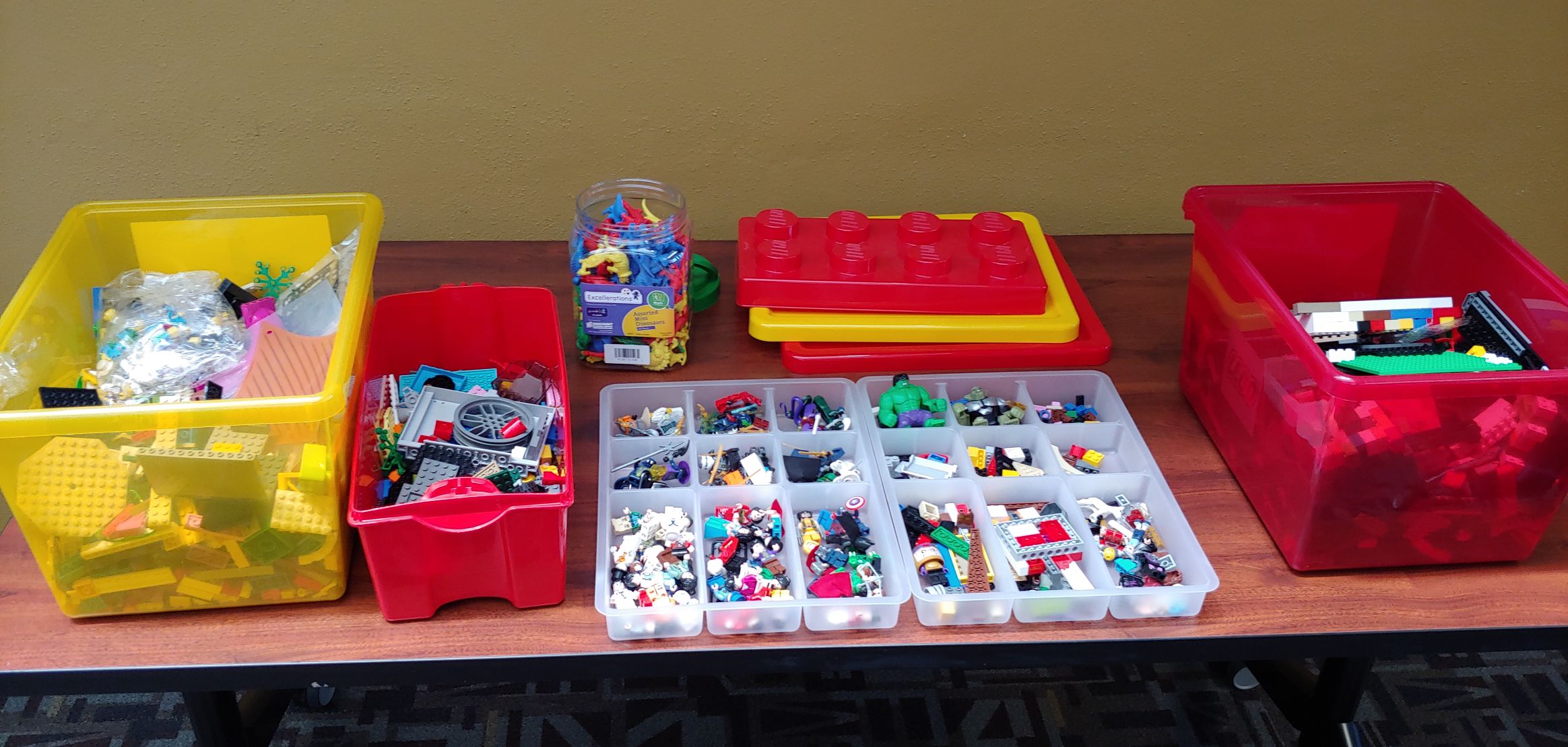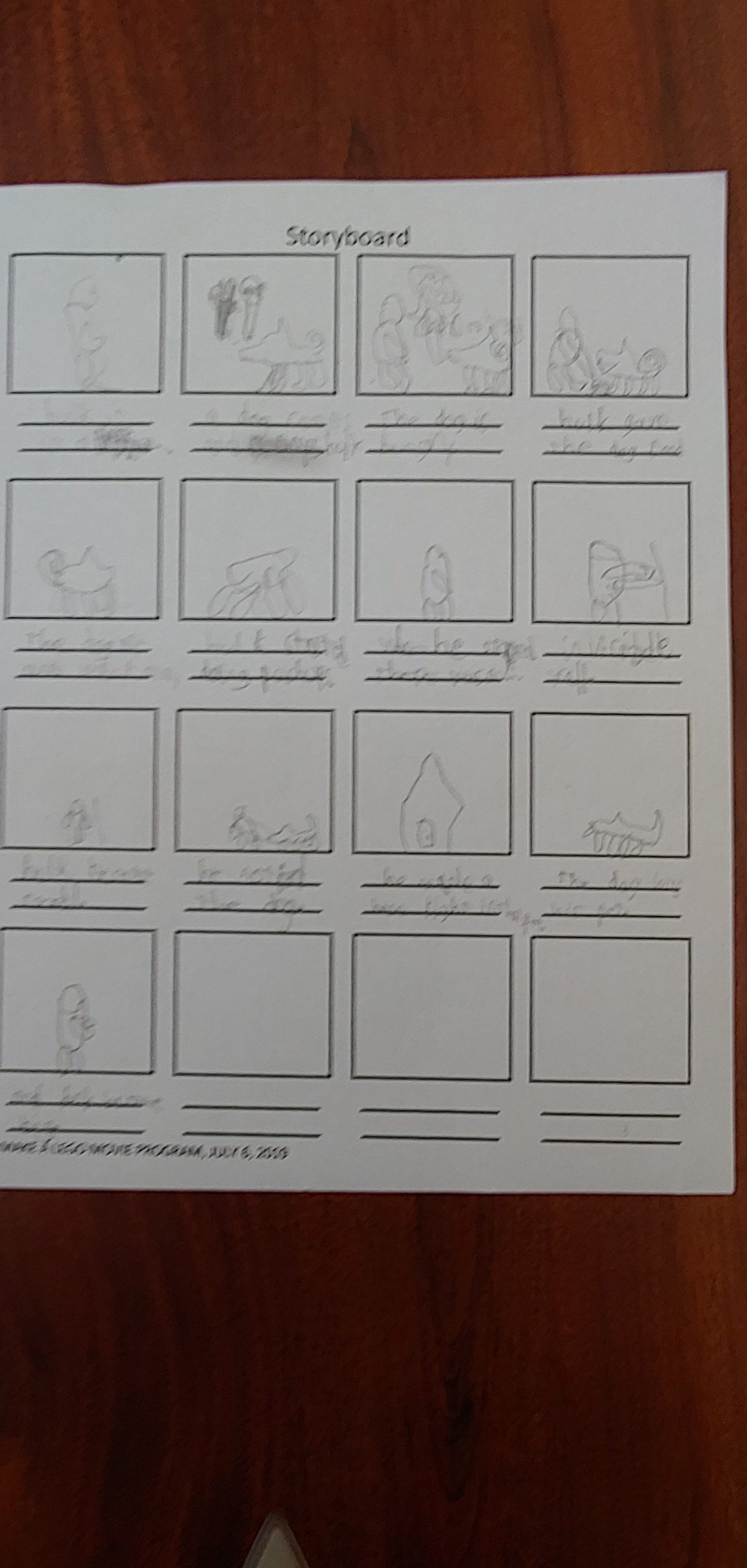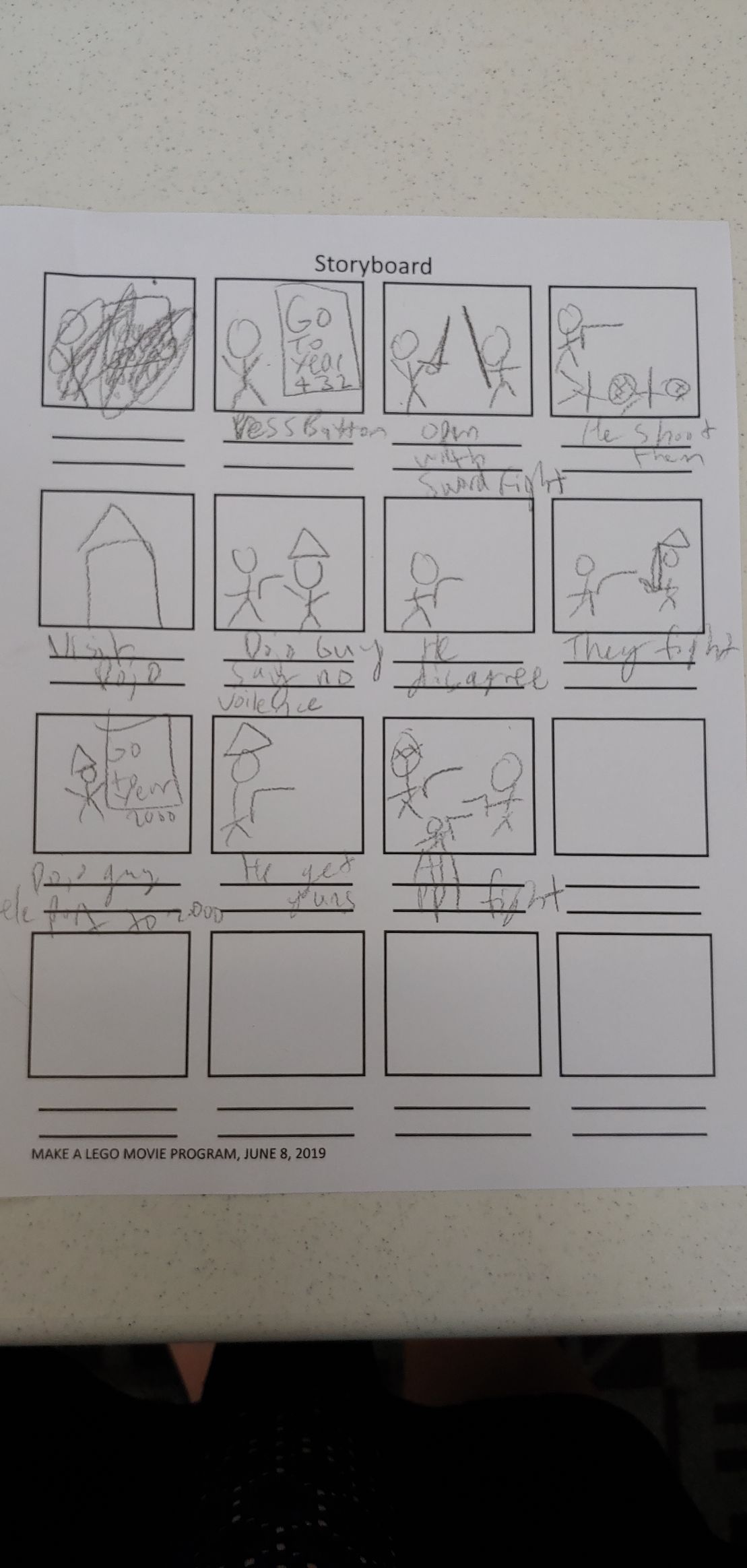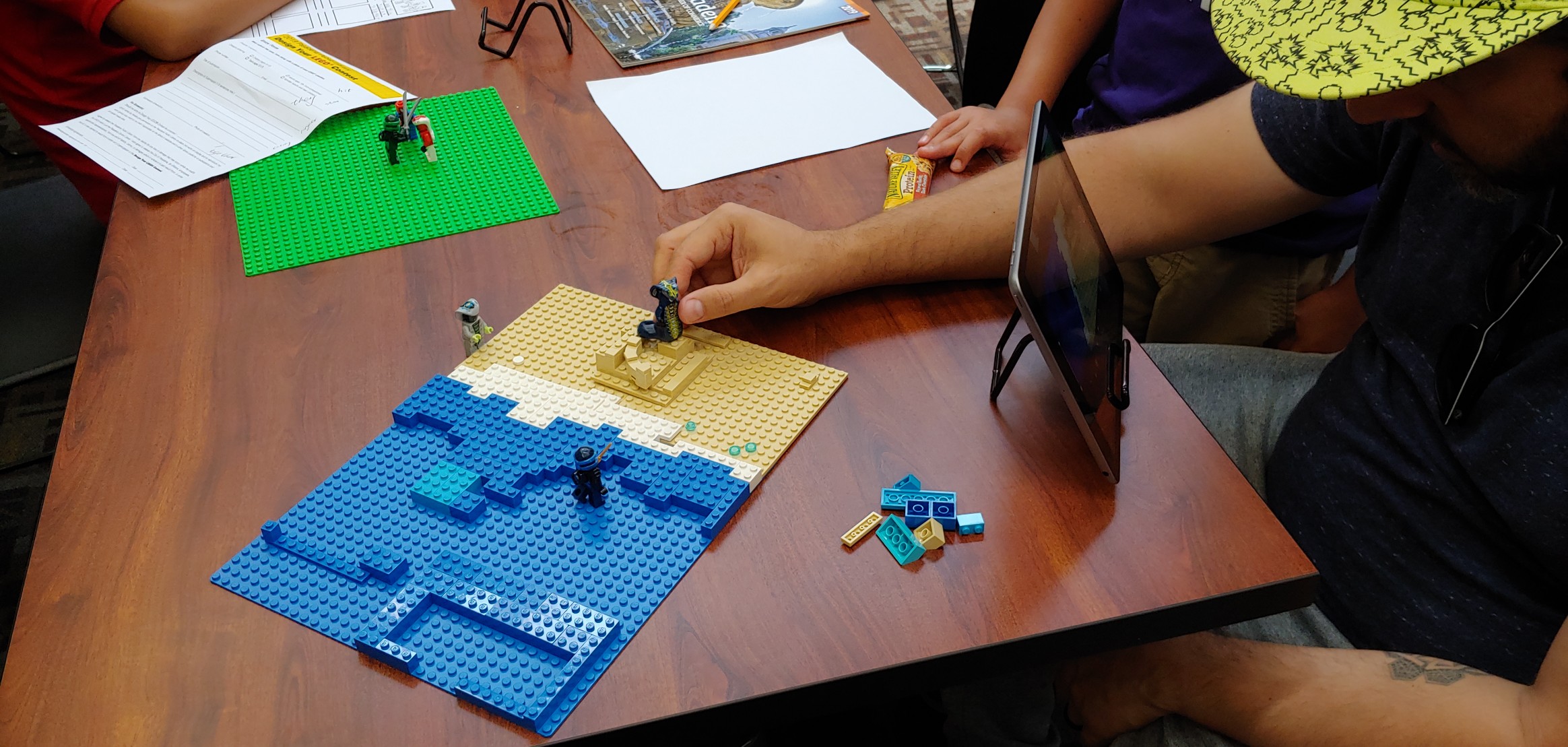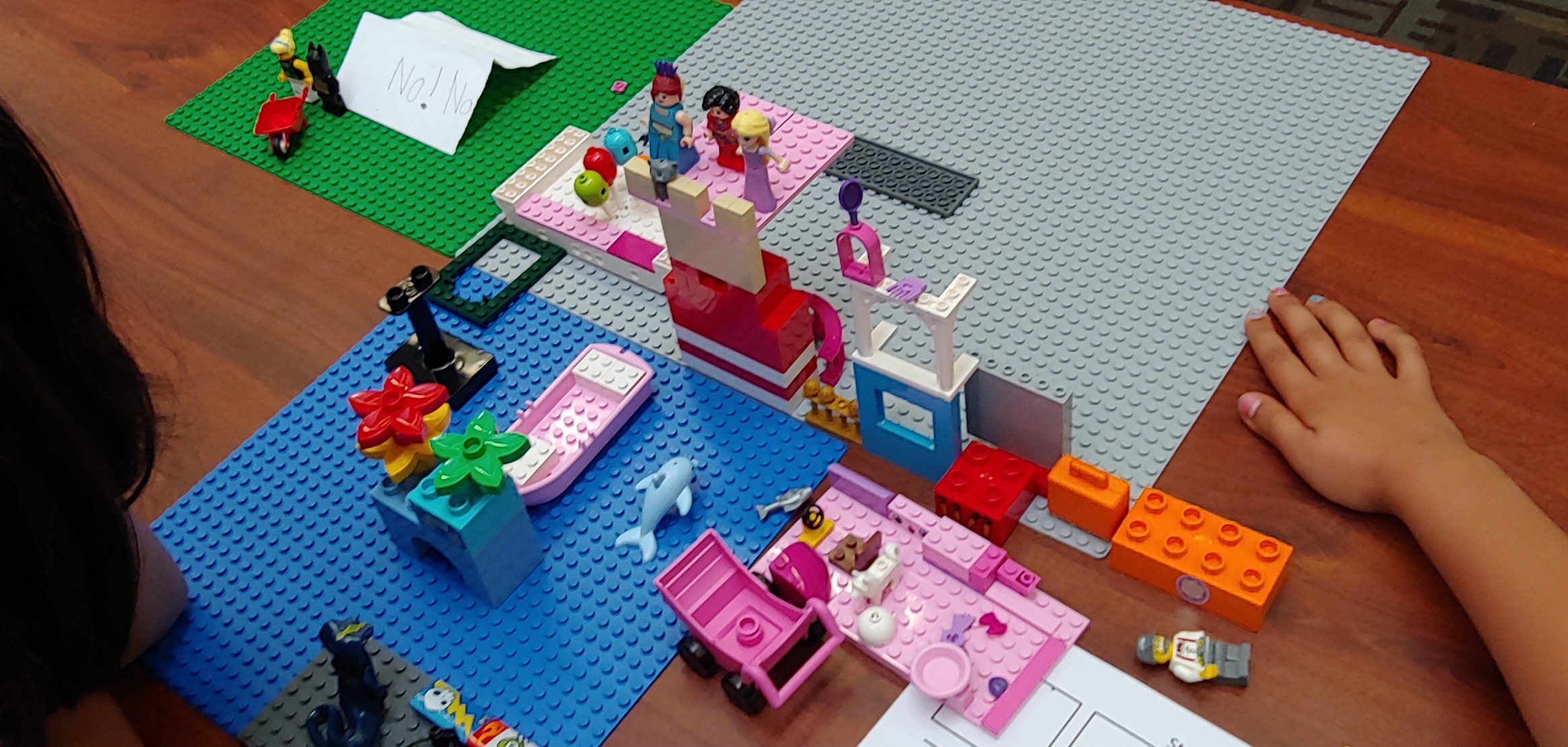As a librarian, I feel my approach to teaching creative writing serves a double-purpose of also being an opportunity to engage kids in the books in our collection. I read them passages from good books and get the kids excited about reading them. And now, when our doors are closed to the public, I find it even more important than ever to use every possible tool in my toolchest to keep kids reading and give them something to get inspired by.
So my most recent writing class was kind of an interactive book talk in which we delved into each book and uncovered writing lessons from it, using each book as a mentor text. I had a list to work from using the books that we are giving kids as prizes for summer reading. In the past, kids could go through a smorgasbord of books for their summer reading prize. Now they have to select one book from a list and get it via curbside pickup. In light of this I wanted to do some kind of virtual program that would book talk their choices. Creative writing did just the trick!
Hooks
To learn about writing a first page that will "hook" the reader, we read the first page of The Last Kids on Earth and the Cosmic Beyond written by Max Brallier and illustrated by Douglas Holgate. Jack, the narrator, tells the reader that he and his friends are about to be "astro-blasted. Catapulted and launched." We discussed why that beginning is exciting and then tried to write new first-sentences for fairytales, replacing "Once upon a time" with something scary or exciting that's just about to happen.
Character and Motif
We learned about writing quirky characters and running themes or motifs with an excerpt from Gabby Garcia's Ultimate Playbook by Iva-Marie Palmer and illustrated by Marta Kissi. We discussed how sports references are a major motif in the book and wrote our own characters who have hobbies or obsessions and how that could be used as a motif.
Tone and Perspective
We learned about tone by comparing two different passages from Front Desk by Kelly Yang. One passage presented the main character Mia's poverty in an upbeat way, focusing on how she and her immigrant parents try to make the best of it by enjoying things like "free air conditioning" whenever they can. The other passage presented a more painful view of the way poverty and hard work are wearing Mia down. One had a happy tone, the other was deeply sad. Then we tried to write about things that might be seen as either happy or sad depending on the person's perspective.
Humor and Fantasy
We got a funny perspective on fantasy and mythology in an excerpt from the book The Serpent's Secret by Sayantani DasGupta and illustrated by Vivienne To. In the excerpt, the main character Kiranmala informs us that riding a winged horse isn't all its cracked up to be. We played with some other ideas of cool experiences one could have, like riding a dragon, or growing your own wings, and tried to show a funny downside to them. This was probably my favorite activity of the class, judging from how well the kids did with it. They came up with great reasons why each cool thing would be a curse in disguise!
Mystery and Suspense
We learned about one of the key ways that the reader is kept in constant suspense in the mystery novel Finding Mighty by Sheela Chari. You never know whom to trust in this book, since almost everyone you meet is introduced as someone you shouldn't trust. The mystery of the brother's disappearance and the puzzling artifacts he left behind keep you guessing and turning pages! We did an activity working with story starters that could be the first sentence of a mystery story, and added sentences 2 and 3.
Resources
Slides:
Recording:
https://us02web.zoom.us/rec/share/_dckF5vTxEpJTpHpr0HDAIkZBIvPeaa8h3dI_PIFyx3jnf4ladr_v9ZHKmzerjWd












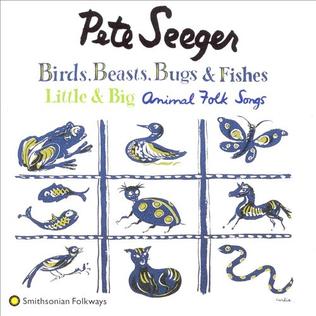
:format(jpeg):mode_rgb():quality(90)/discogs-images/R-5189313-1425508332-4387.jpeg.jpg)




